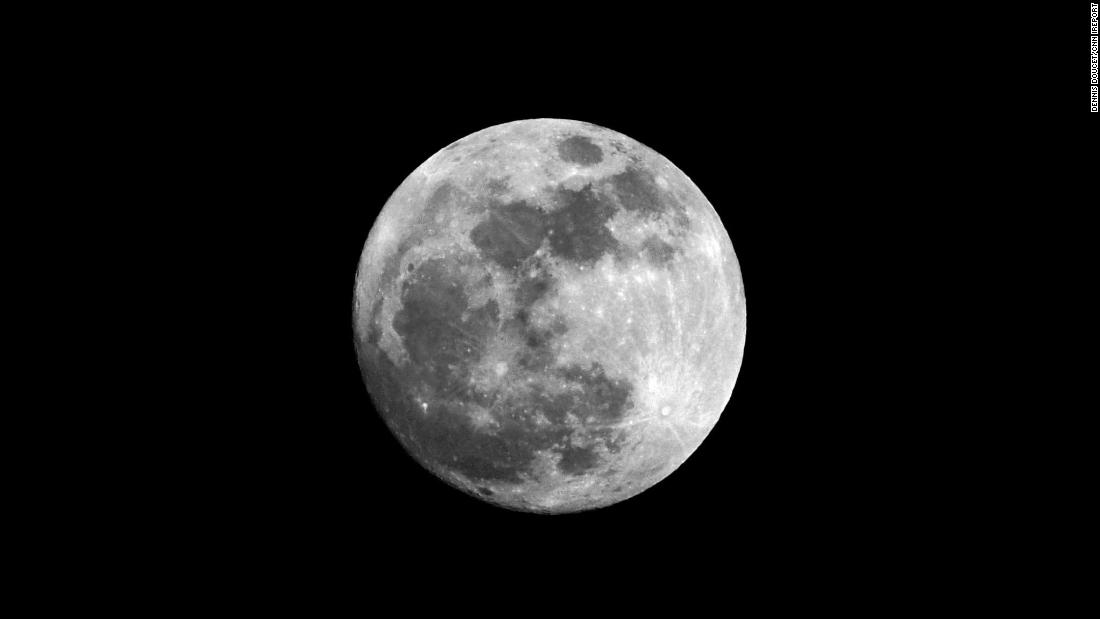Products You May Like
(CNN) — Another full moon event is right around the corner and you don’t want to miss it.
Before you head outside with your camera to capture that Instagram worthy image, here are some tips and tricks from an avid space photographer.
Dennis Doucet, 61, has been taking stunning images of the moon shining over Kobe, Japan, for several years and many of his photos have even been featured on CNN. The moon, to him, symbolizes one of “humankind’s shared constants.”
“When I’m abroad, and missing friends or family, I look at the moon and hope that they will look at the moon as well, and we will have a shared experience,” Doucet, who is originally from Canada, told CNN last year.
The equipment
OK, let’s get down to business. First, you need the right equipment. Doucet suggests a good camera, variety of lenses and, of course, a tripod.
“I decided to use what is known as “micro four-thirds” cameras, as they are smaller, lighter and cheaper than the standard interchangeable cameras,” he said.
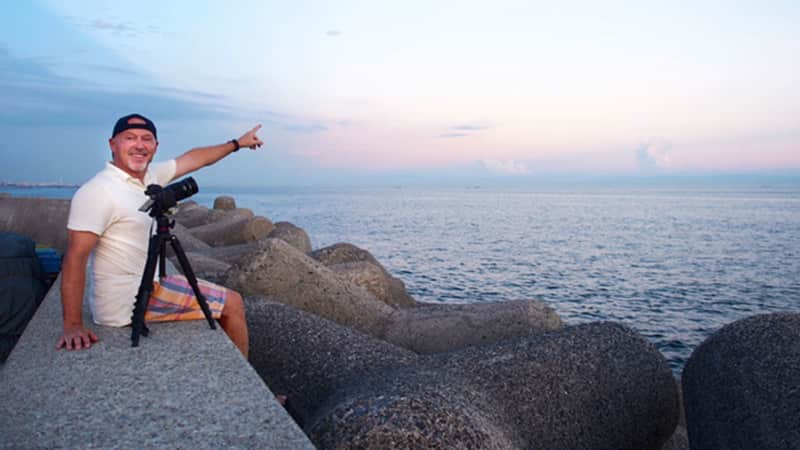
Dennis with his camera and tripod setting up for a shoot.
Dennis Doucet
The reason he enjoys the smaller, lighter camera is because it’s easier to haul around, especially with all your gear. He also suggests having a number of different lenses, from extreme wide-angle to 300mm. The latter he said is “in relative resolution, equals a 600mm telephoto lens on a regular camera.”
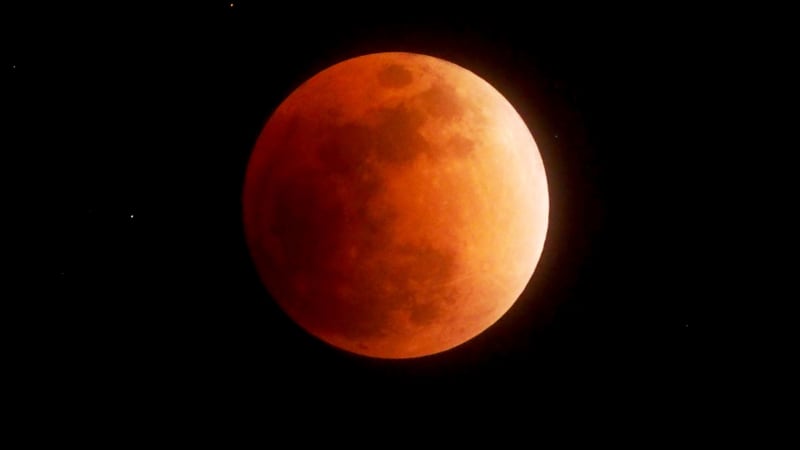
Docuet took this image of a super blood moon in 2018.
Dennis Doucet
That lens will help you get up close and personal with the moon.
Location, location, location
Now that you have your gear set, it’s time to pick out the best location to set up. Doucet usually takes the images from his backyard but on special events, like eclipses, moonrises and moonsets, he will look for an area with a more unobstructed view and less light from the city.
He suggests downloading a moon locator app on your phone.
“Many of them can superimpose this information on a real-time camera image on our phones,” he said. “We point the (cellphone) camera toward the horizon and the app will show us where the moon (or sun) will rise, its trajectory through the sky, where it will set and the times of these events.”
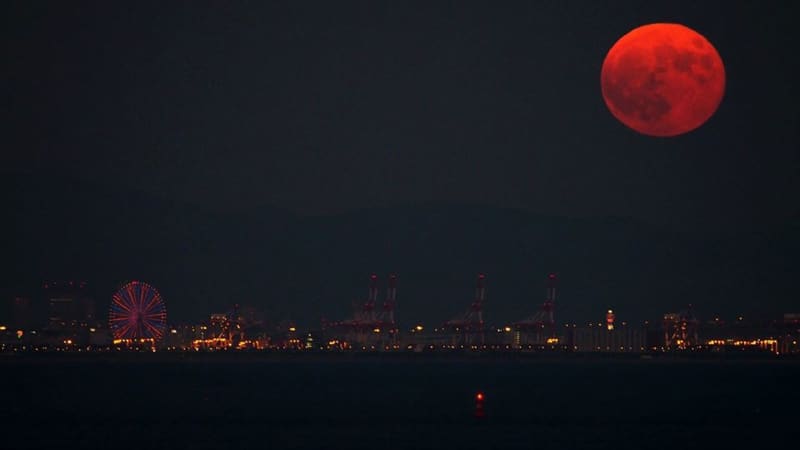
Doucet took this image in 2015 that shows the “blood” moon rising above Osaka, Japan.
Dennis Doucet
This will help you to find the perfect location to set up your tripod.
Before you leave the house, Doucet suggests making sure you have the right clothing for the weather (some nights get cold) and dressing comfortably.
“Also, don’t wear your favorite clothes — lying on the ground, climbing a tree, etc. can often give you an angle that can make the difference between a good shot and a GREAT one!”
The camera settings
Now on to those pesky camera settings, that “auto” setting is not your friend when taking images of the moon because the moon reflects a bunch of light from the sun.
“If a camera is set to “AUTO” setting, it will “see” all of the darkness (black) of space and try to make it exposed to halfway between black and white — therefore, increasing the exposure (by a lot!),” he said.
“This increase in exposure will, in turn, wash out ALL features on the moon, and the resulting image will only show a (totally) white circle.”
But don’t fret, Doucet shares his exact settings that you can use and he said it should “yield fantastic exposures of the moon.”
When using a lens with a focal length (or equivalent) of 600mm or longer:
ISO: 800
Aperture: 6.7 (or close)
Shutter speed: (somewhere between) 1/1250 -1/2500 second
But wait, there’s more!
Doucet says at those shutter speeds hand-held shots are doable but he highly recommends a tripod. He even suggests a remote shutter release to ensure the elimination of almost all camera shake.
Editing
Now that you have your images, Doucet suggest editing them to black and white. Here’s why:
“As the lunar soil (regolith) is a light, greyish-brown color, it is not very photogenic, and it doesn’t show much contrast between brightly lit areas and shadows,” he said. This then helps him tweak the contrast and brightness, if needed.
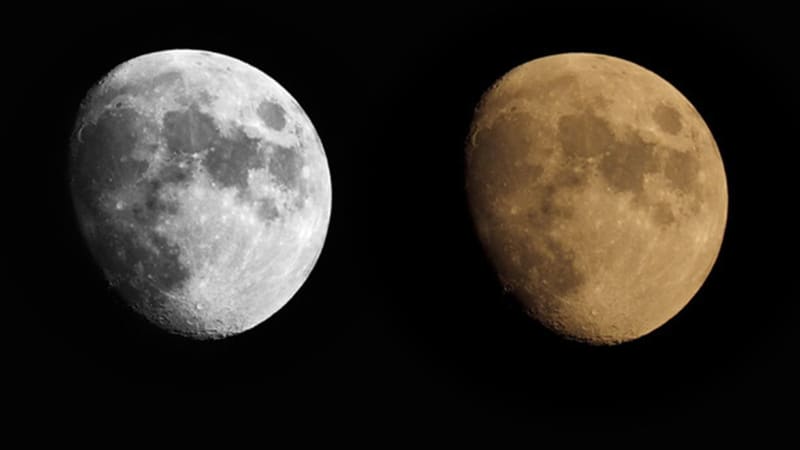
The image of the right is the moon before black and white editing.
Dennis Doucet
The plus side to this is you don’t need any fancy programs, he said. Most photo editing apps on our phone will do the trick.
Now you are ready to go moongazing and capture the perfect photo to show off to your friends.
Doucet’s last few tips of advice are to make sure your equipment is working before you leave the house and to always have extra batteries and a fresh memory card with you.
“And, the most important of all: HAVE FUN!”
A version of this piece first appeared in September 2019
